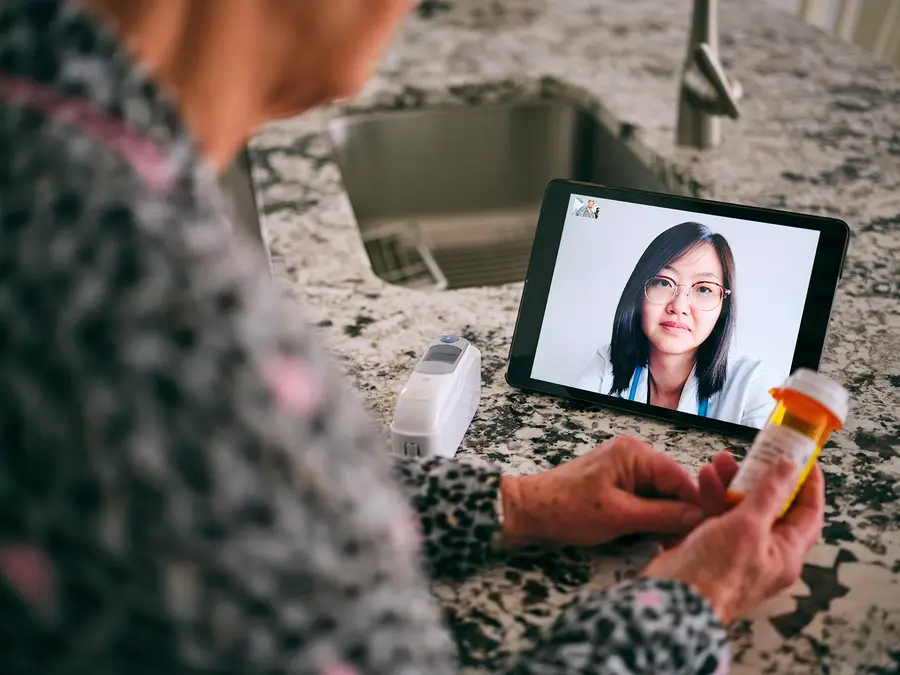
Over the past several months, the novel coronavirus has had harrowing effects on the U.S. health care system. While public health experts and physicians have provided some answers about the economic/physical impact and the important precautionary measures to take, much remains unknown. Perhaps most importantly, it is unclear how to provide high-quality and high-value health care in the midst of the pandemic. Many non-urgent health care facilities across the country closed shortly after the scope of the virus became apparent; some because their providers were needed elsewhere to treat COVID patients, and some because their patient volume had simply dropped below sustainable levels as people avoided leaving their homes for non-urgent care. We have also seen a rise in the use of telehealth services: Non-emergency care and consultation provided over the internet. As providers rush to invest in these technologies to safely serve their patients, it is important to consider the potential risks and benefits of long-term adoption
What is Telehealth?
Telehealth provides an “audiovisual hookup” that allows patients to be virtually screened and examined, while also allowing health care providers to collect patient data. Effective virtual screening prior to an in-person visit, for example, can “help protect patients, clinicians, and the community from exposure. Respiratory symptoms—which may be early signs of Covid-19—are among the conditions most commonly evaluated with this approach.” These “visits” can also be supplemented with data provided by devices that collect patient data remotely (e.g., fitness trackers, blood-pressure cuffs, and pulse oximeters). As COVID-19 has kept individuals with chronic illnesses away from hospitals and doctor’s offices, virtual health care has surfaced as a safe and effective method to deliver certain types of care.
How has telehealth been adopted?
While telehealth has been hailed as a breakthrough approach in more remote, rural areas where residents often have to travel great distances to seek even basic care, there had not been widespread adoption prior to the pandemic. Patients, payers, and providers alike were slow to adopt given the upfront time and resources necessary to both obtain and learn the new technology. One estimate places total annual spending on telehealth in the US at $3 billion prior to the pandemic. Telehealth has also historically not been a widely covered service outside of more rural areas. However, in March of 2020, legislation was passed allowing providers to bill Medicare for care provided via telehealth for a variety of services during the pandemic. The Trump Administration also waved privacy rules set by the Health Insurance Portability and Accountability Act (HIPPA), permitting clinicians to connect with patients virtually.
Is telehealth here to stay?
It remains unclear whether telehealth will remain billable in the long-term. Use of telehealth services has expanded due to the pandemic, but many of those measures are transitory. With this expansion, however, has come a substantial increase in the proportion of providers and patients who are both comfortable with the technology and who are interested in seeing its continued use. In addition, it is estimated that up to $250 billion of current US health care expenditures could transition to telehealth, potentially improving everything from access and patient experience to efficiency and total cost. Moreover, providers do not have the normal support staff (e.g. nurses, technicians) to handle the administrative components of the “visit.” However, while virtual health care offers many benefits, it also carries potential risk and there remain substantial technical and practical barriers to widespread long-term implementation. In a J.D. Power telehealth survey conducted prior to the pandemic, quality of care was a concern of nearly half of the respondents. Concerns also remain about effectiveness and about the future of reimbursement policy after the pandemic ends. Perhaps more importantly, significant regulatory barriers remain at the state and federal level, having only been lifted temporarily in response to the pandemic.
Telehealth has received notable attention from state and federal governments as a safe and practical mechanism for providing care as new COVID cases continue to rise. However, these services may also make a useful contribution to the longer-term problem of rising costs and access barriers across the broader U.S. health care system. Telehealth offers a realistic, feasible way to meet the growing demand for services and the need to manage large amounts of health information. Time will tell whether policymakers and health-care providers are willing to embrace these technologies longer-term and what the broader implications will be for health care in the United States. If virtual health care is our new reality, does it hold great promise, great peril, or both?


